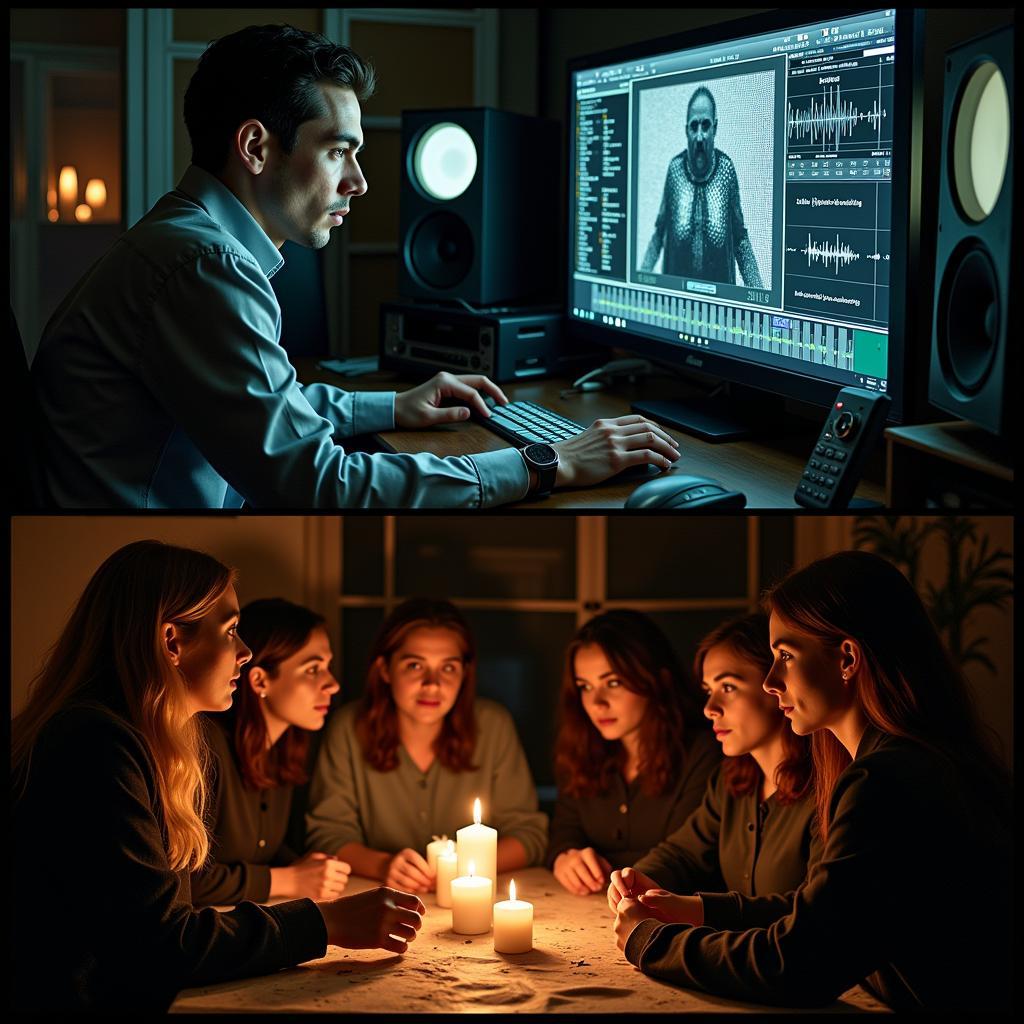Research forms the backbone of any credible exploration, especially when delving into the enigmatic realm of the paranormal. Whether you’re a seasoned investigator or a curious novice, understanding the core approaches to research is crucial for separating genuine phenomena from mere illusions. Let’s explore the three essential research approaches that illuminate the path to paranormal understanding.
The Tripod of Truth: Qualitative, Quantitative, and Mixed Methods
Paranormal research, much like any other field of inquiry, relies on structured methods to unravel its mysteries. These methods can be broadly categorized into three distinct yet interconnected approaches: qualitative, quantitative, and mixed methods. Each approach offers a unique lens through which we can examine and interpret the paranormal.
1. Qualitative Research: Delving into the Depths of Experience
Imagine interviewing a witness who claims to have encountered a ghostly presence. Their story, filled with vivid emotions, personal interpretations, and detailed descriptions, forms the heart of qualitative research. This approach focuses on understanding the “why” and “how” behind paranormal phenomena by exploring subjective experiences, perspectives, and meanings.
Key Characteristics of Qualitative Research:
- Data in words, images, and observations: Think interview transcripts, observational field notes, and even historical texts.
- Inductive reasoning: Moving from specific observations to broader themes and patterns.
- Emphasis on understanding context and meaning: Recognizing that experiences are shaped by individual beliefs, cultural backgrounds, and personal histories.
Examples of Qualitative Research in Paranormal Investigation:
- Conducting in-depth interviews with individuals who have had paranormal experiences.
- Analyzing historical accounts of hauntings, apparitions, and other unexplained events.
- Observing and documenting the behavior of alleged psychics or mediums during séances or readings.
2. Quantitative Research: Seeking Patterns in the Paranormal
While qualitative research dives deep into personal narratives, quantitative research aims to uncover statistical patterns and correlations. Imagine using electromagnetic field (EMF) detectors to measure fluctuations in energy during a paranormal investigation. The numerical data collected forms the foundation of quantitative research.
Key Characteristics of Quantitative Research:
- Data in numerical form: Think measurements, frequencies, and statistical analyses.
- Deductive reasoning: Testing pre-defined hypotheses and theories using statistical methods.
- Emphasis on objectivity and generalizability: Aiming to identify patterns and relationships that hold true across different cases and contexts.
Examples of Quantitative Research in Paranormal Investigation:
- Analyzing data from EMF meters, temperature sensors, and other scientific instruments used in investigations.
- Conducting statistical analyses of reported paranormal activity in specific locations to identify potential hotspots.
- Experimentally testing the abilities of individuals claiming psychic powers under controlled conditions.
3. Mixed Methods Research: Bridging the Qualitative-Quantitative Divide
Imagine combining the rich narratives from witness interviews with statistical data collected from environmental sensors during a paranormal investigation. This integration of qualitative and quantitative approaches exemplifies the power of mixed methods research.
Key Characteristics of Mixed Methods Research:
- Combining qualitative and quantitative data: Utilizing the strengths of both approaches to gain a more comprehensive understanding.
- Triangulating findings: Seeking convergence and corroboration between different data sources.
- Providing a more nuanced and holistic perspective: Recognizing that the paranormal, like many human experiences, is multifaceted and complex.
Examples of Mixed Methods Research in Paranormal Investigation:
- Interviewing witnesses to gather detailed accounts of paranormal activity and then using quantitative methods to analyze environmental factors that might have contributed to the experience.
- Examining historical records for patterns in reported hauntings and then conducting on-site investigations using a combination of qualitative and quantitative data collection techniques.
- Studying the psychological and physiological responses of individuals during paranormal encounters to understand the interplay between subjective experiences and objective measurements.
 Mixed Methods Research in Paranormal Investigation
Mixed Methods Research in Paranormal Investigation
Choosing the Right Approach: A Matter of Perspective
The best research approach for a particular paranormal investigation depends on the research question, the available resources, and the nature of the phenomenon being studied.
- Are you seeking to understand the emotional impact of a haunting on a family? Qualitative research would be ideal.
- Do you want to investigate whether certain environmental factors correlate with increased reports of paranormal activity? Quantitative research might be more suitable.
- Are you aiming to explore the potential connections between psychological states and paranormal experiences? Mixed methods research could provide the most comprehensive insights.
The Journey of Paranormal Research: Embracing the Unknown
Ultimately, The Three Essential Approaches To Research serve as compasses guiding us through the uncharted territories of the paranormal. By understanding and utilizing these approaches, we can move beyond mere speculation and towards a more rigorous and insightful exploration of the unexplained.
For further exploration into the methodologies of paranormal research, consider delving into these related topics:
- What is a quantitative research question?
- What are the research process steps?
Remember, the pursuit of paranormal understanding is a journey of discovery. By embracing rigorous research methods and remaining open to diverse perspectives, we can shed light on the mysteries that lie hidden within our world and beyond.
Need help with your Paranormal Research? Contact us 24/7:
- Phone: 0904826292
- Email: research@gmail.com
- Address: No. 31, Alley 142/7, P. Phú Viên, Bồ Đề, Long Biên, Hà Nội, Việt Nam.